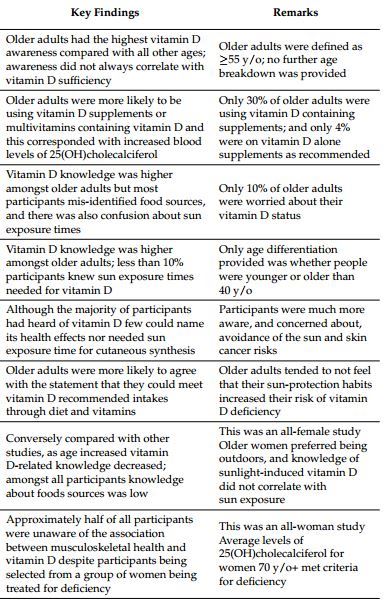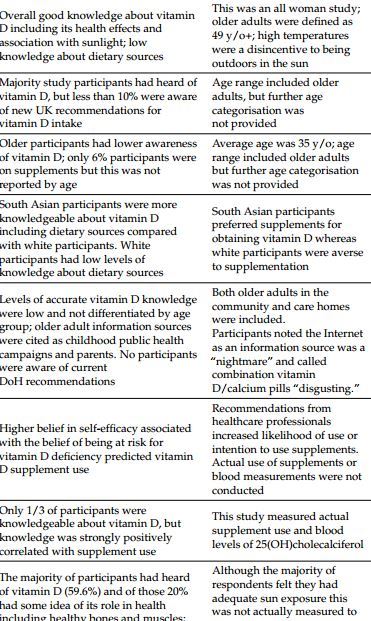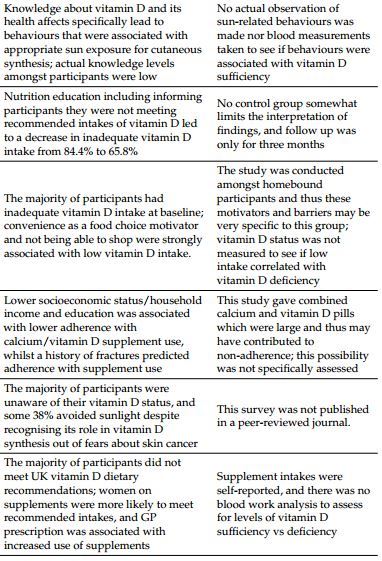Older adults need to know more about Vitamin D
Older Adults’ Beliefs, Knowledge and Preferences for Achieving Healthy Vitamin D Status: A Narrative Review
Geriatrics (Basel). 2018 Jun; 3(2): 26., doi: 10.3390/geriatrics3020026
Tatiana Christides
📄 Download the PDF from VitaminDWiki
The following are just the right columns of Table 1



Autonomy and mobility are, in many cases, key elements underlying positive ageing. Vitamin D (vitD) is essential to maintaining musculoskeletal health and hence mobility; ensuring adequate vitD status is important in positive ageing. However, vitD deficiency persists in ~10–30% of older adults in the Western world. The aim of this review was to explore older adult vitD beliefs, knowledge and preferences, in order to identify means to prevent vitD deficiency respectful of older peoples’ autonomy. Academic search-engines were used to explore the research literature with the keywords: vitamin D; older adults; preferences; knowledge; practices; beliefs. 22 recent studies were identified; although the majority of older people knew of vitD, knowledge about increased fall risk secondary to deficiency was limited and knowledge did not always correlate with adequate intake or status.
There was evidence of confusion regarding vitD food sources, sun-exposure and health benefits, and although General Practitioners were trusted information sources they often did not discuss vitD with patients.
Preferences varied significantly depending on geographic location, ethnicity, socioeconomic status, education and cultural factors; overall, older people wanted more clear information about vitD.
In conclusion, older people have a relatively high awareness of vitD, however, knowledge may be inaccurate and low in those most at risk, and knowledge of deficiency-associated fall risk is under-recognised. Furthermore, studies specifically addressing older adult preferences are lacking; an understanding of preferences, integrated into public health guidelines and implementation strategies, is key not only to decreasing the risk of vitamin D deficiency but also to enabling autonomy in older adults.
